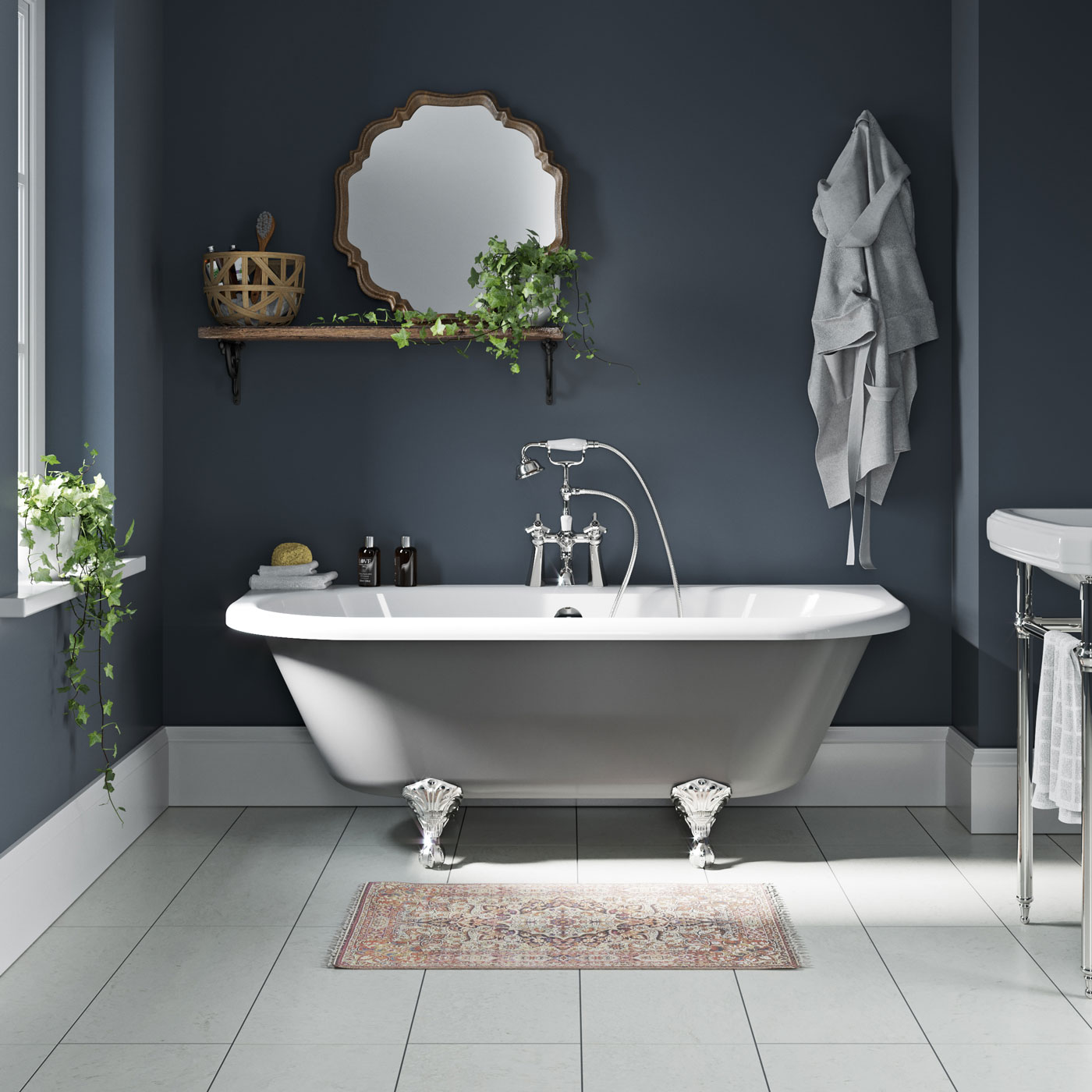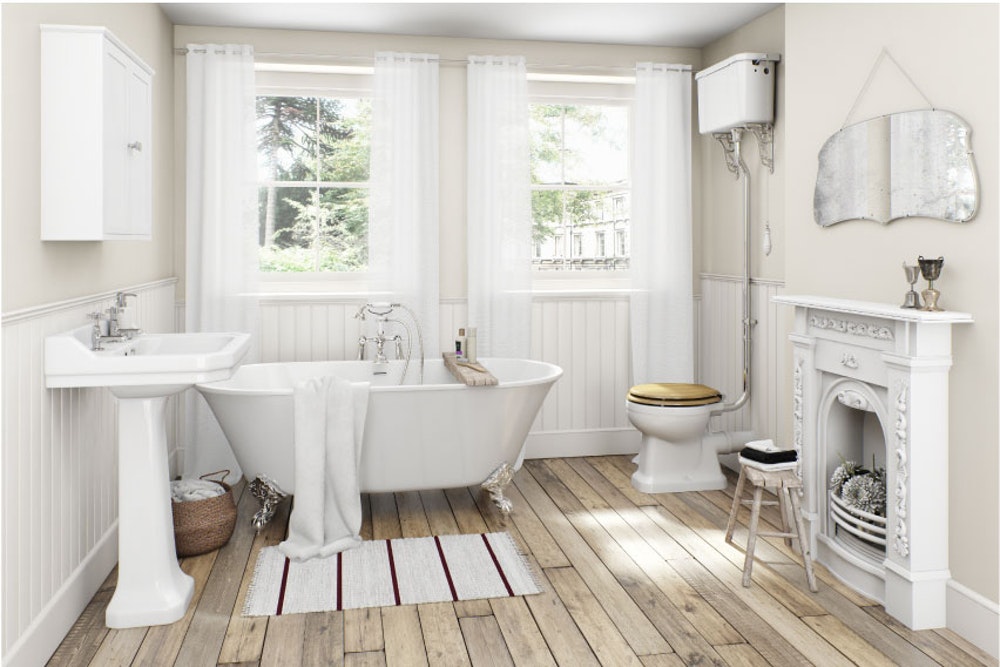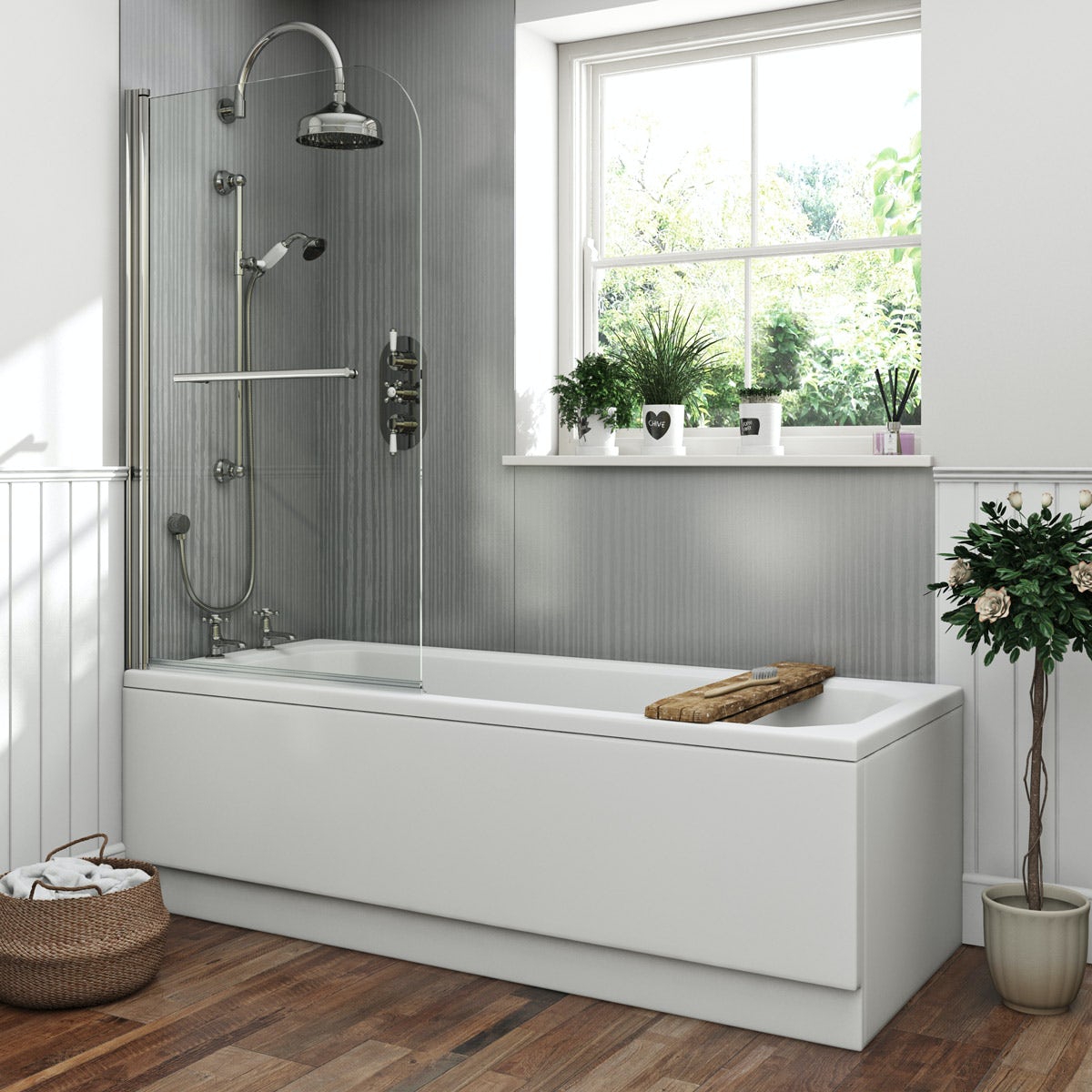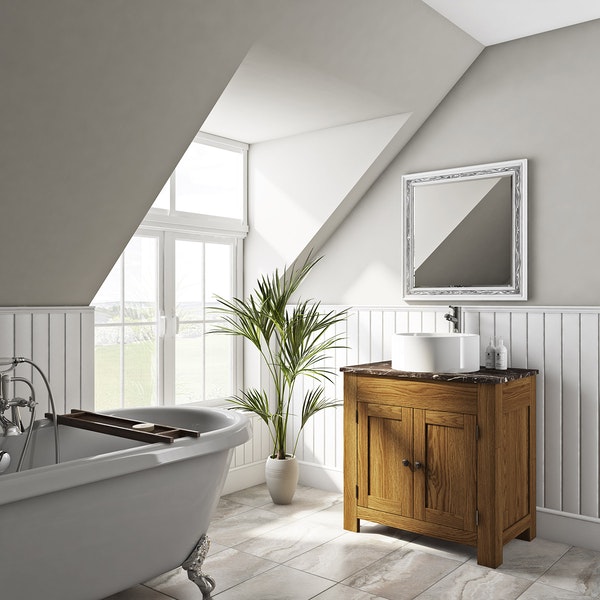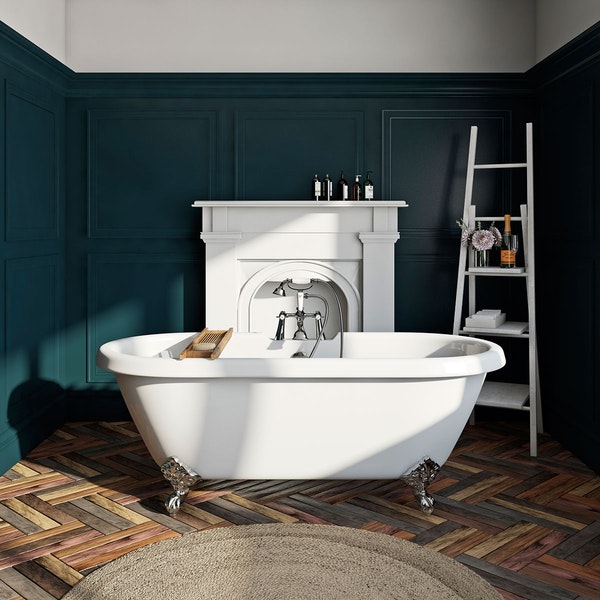We’ve all been there, standing in the middle of the bathroom section at the local home improvement store, feeling completely overwhelmed. You know you need a new bathtub, but how do you go about finding one that fits your budget and looks great in your space? With so many materials, shapes, sizes, and styles to choose from, selecting just the right bathtub can seem like a daunting task.
Don’t worry, you’re in the right place. Today, we’ll take an in-depth look at how to choose the right bathtub for your budget. We’ll explore the different materials and pricing options available, share tips on measuring your space, and discuss the advantages and disadvantages of different styles. By the end, you’ll have the knowledge to pick out the perfect bathtub to fit your needs – without breaking the bank!
Quick Clarification
Consider the size and shape of the bathroom to ensure the bathtub will fit. Additionally, compare different models of bathtubs to find one with features that fit your needs while staying within your allotted budget.
Finding the Right Bathtub for Your Budget
When it comes to finding the right bathtub for your budget, there are some important factors to consider. First, you will need to determine the size of the tub that best fits your home. Considerations include available space, how many people will be using it, and if it needs to fit in any alcoves or other awkward locations. If your budget is tight, it may also be necessary to look at pre-installed options rather than being able to custom build or order a specific size.
You’ll also want to factor in your design preferences. Do you prefer a sleek and contemporary style, or a more traditional one? What color do you think would match your home decor best? Your dealership or shop should have plenty of samples and options that can help you visualize how different styles and materials will look in your bathroom.
It’s also important to research all of the numerous price points for bathtubs within your budget. Bathtubs come in a variety of sizes and styles, with prices ranging from basic models that cost a few hundred dollars, up to luxurious spa tubs with advanced features costing several thousand dollars. A good rule of thumb is to calculate the total cost for both the hardware and installation before making a purchasing decision.
Finally, make sure you take into account any local housing regulations that may affect the type of tub you choose. For example, some cities have requirements regarding tub depth and safety rails; others may require certain materials like fiberglass or porcelain due to design codes or water quality regulations. Be sure to thoroughly research these regulations before committing to anything; this information can often be found on city and county websites, or directly from local code enforcement offices.
Considering all of these budgetary factors, finding the right bathtub will ensure you don’t overspend while still getting a product that meets your needs and complements your home’s design aesthetic. Now that we’ve discussed selecting a budget-friendly bathtub, let’s take a closer look at the various types of bathtubs available on the market today.
Types of Bathtubs Available
There are many different types of bathtubs available for purchase, each with its own pros and cons. Before you decide on one for your project, it’s important to understand the difference between the main types—acrylic, steel, cast iron, cultured marble, and fiberglass.
Acrylic bathtubs come in a variety of styles and colors and are generally more affordable than other tubs. Acrylic is also lightweight, making it easy to install and can be refinished to restore an aged look. On the other hand, acrylic is not as durable as some of the other types of bathtub materials and may show signs of wear and tear over time.
Steel bathtubs offer durability but tend to be more expensive than acrylic bathtubs. Steel is strong enough to hold up to daily use without becoming damaged over time. Steel bathtubs don’t require any special maintenance such as re-staining or refinishing and they can easily be updated with changed fixtures or accents. The downside of steel tubs is that they must be installed correctly in order to prevent prematurely wearing out or warping.
Cast iron tubs have been around for decades and offer a timeless look. These tubs are incredibly durable and long-lasting. Additionally, cast iron holds heat well and provides an enjoyable soak even after you have finished bathing. However, these tubs are quite heavy and require special installation methods which can raise costs. Furthermore, because of their weight, shipping for a cast iron tub can be expensive if necessary.
Cultured marble is a material used for creating customizable bathroom surfaces like countertops, shower stalls, and baths. The biggest advantage of this material is that it looks like real marble but is much more affordable. The downside is that it is not as stain-resistant or durable as some other materials used for tubs such as steel or cast iron.
Fiberglass tubs provide a cost-effective alternative compared to traditional materials like acrylic or cast iron. It’s scratch resistant, easy to install and can come in an array of colours. One downside of fiberglass baths is that it’s not as durable as some alternatives so it may need to be replaced earlier than other options depending on how often it’s used.
The type of bathtub you choose should depend on your budget needs as well as your lifestyle preferences. Weighing the pros and cons of each material will help you make an informed decision before committing to anything permanent in your bathroom space. Now let’s take a closer look into a popular choice – acrylic baths – in the next section.
Acrylic Bathtubs
Acrylic bathtubs are an affordable and common option for those wanting to replace their existing tub. Made from a petroleum-based polymer, acrylic is durable and lightweight so it’s easy to maneuver during the installation process. Acrylic also has a non-porous surface that is easy to keep clean, making cleanup in the bathroom much easier. In addition, these tubs come in a variety of styles, shapes, and colors so you can find one that fits your exact needs.
However, because acrylic is a soft plastic, it can scratch quite easily. So if you have kids or pets running around the bathroom it could be best to opt for a more durable material like cast iron or stainless steel. Additionally, acrylic won’t retain heat as well as other materials such as cast iron, so if long baths are what you desire then an acrylic bath might not be the ideal choice.
All in all, acrylic tubs are an attractive and versatile option for many bathrooms due to their low cost and availability of styles and colors. However, they may not be the best choice if you’re looking for a long term investment piece or dealing with high traffic areas. Soaking Tubs are another great option when taking cost and durability into account – so let’s take a look at these now!
Soaking Tubs
Soaking tubs are an excellent choice to consider when looking for a bathtub on a budget. They offer users a wonderful, relaxing experience – perfect for winding down after a hard day at work. Generally much shorter than whirlpool tubs, soaking tubs provide a more minimalistic design that allows you to stretch out and immerse yourself in hot water up to your neck. This can be especially beneficial for those with physical ailments, such as tension headaches or sore muscles.
When choosing a soaking tub, the primary factor to consider is size. Soaking tubs come in many sizes, ranging from tiny one-person tubs that require little space to large types that can accommodate two or three people at once. While smaller options may be quite affordable, remember that larger versions will cost more due to their size and deeper depth. Be sure to measure the size of the area you want to install the soaking tub before making your purchase, so you can be sure it fits.
Another point of debate is whether it is worthwhile to invest in high-end materials compared to low-cost ones. Many opt for sturdy acrylic materials as they are less likely to warp or crack over time and require less maintenance. On the other hand, more expensive materials such as copper or stone may last even longer and add a unique touch of elegance to your bathroom. Ultimately, how much you would like to invest into a soaking tub will depend on your budget and long-term needs.
Finally, think about what type of features will bring you the most joy and relaxation. Some popular features include heated backrests or built-in shelves for storing toiletries; however, these extras come with additional costs associated with them. Weigh your options carefully and select features based on how often you plan on using them and how much extra functionality they offer.
As with any other big purchase, research all available options before buying – check customer reviews and compare prices between different retailers. By understanding what your preferences are upfront and carefully weighing the pros and cons of each type of soaking tub, you can find one perfect for your budget without compromising quality standards or safety. With that said, let’s move onto another type of bathtub: whirlpool bathtubs!
Key Points to Remember
Soaking tubs can provide a great and relaxing bath experience, but when choosing one size should be a primary factor, as smaller ones will tend to be more affordable. Investing in sturdier materials such as acrylic may cost more initially but are less likely to warp or crack over time. Consider any extra features you would like such as heated backrests or built-in shelves, keeping in mind that they come with additional costs associated with them. Finally, research all options before buying, so you can find the right one for your budget without compromising quality.
Whirlpool Bathtubs
Whirlpool bathtubs are an investment, but if your budget allows for it, they can be a great way to add luxury and relaxation to your bathroom. Whirlpool tubs have water jets strategically placed so that you can enjoy a deep tissue massage as you soak in the tub. They’re also great for people with medical conditions, as the massaging jet system can help ease inflammation, reduce pain, and enhance circulation.
On the other hand, many of these tubs are best suited for large bathrooms due to their size and complexity. Additionally, whirlpools tend to use a considerable amount of water—and energy—to operate which can add up over time. This makes them more expensive upfront and more expensive to maintain in the long-run—both on the wallet and the environment.
Overall, if you’re looking for a luxurious and functional addition to your bathroom that will offer both aesthetic appeal and relaxing hydrotherapy, then a whirlpool bathtub is a great option. Just make sure to factor in all costs (and potential consequences) before committing to this purchase.
Moving forward from here, the next section will discuss how to choose the right size bathtub for your space.
Choosing the Right Size for Your Space
When choosing the right size bathtub for your bathroom, space is a major factor to consider. In some homes, especially smaller apartments and condos, space may be limited; in this case, purchasing a Compact or Alcove tub would probably be the best option. These types of tubs are designed to fit into tight spaces and can still provide you with a comfortable bathing experience. If you are lucky enough to have more room available, then selecting a freestanding Soaker tub might be an ideal choice. Both options can accommodate one person and still provide plenty of space for relaxation.
On the other hand, if you’re looking for more of a luxury spa-like experience and have the space available in your home, opting for a larger corner or drop-in tub might be the way to go. These models provide ample space for two people (or for those extra-long soaks) and come in various shapes and heights to create different levels of comfort. However, bear in mind that if you are going with a bigger model, you will need more resources such as water supply pipes, drain outlets, etc., which may raise your costs.
No matter how much space is available in your home, it is important to take accurate measurements before making any purchases; this will help ensure that the bathtub you choose will fit perfectly in the designated area.
To sum up, when choosing the right size bathtub for your home don’t forget to factor in both your available space and budget when making your decision. With these considerations in mind, let’s move on to the next section about selecting the right design for your home.
Selecting the Right Design for Your Home
When selecting a bathtub for your home, design is an important factor to consider as it will set the look and feel of your bathroom. Many people opt for classic designs when choosing their bathtubs, such as freestanding tubs and alcove tubs that provide a timeless look and ample soaking space.
Freestanding tubs have become increasingly popular in recent years due to the aesthetic they add to interiors while maintaining functionality. This type of tub stands independently within the room, making it a great choice for homeowners who want to create a statement within their bathroom. On the other hand, alcove tubs are typically built into three walls rather than existing on its own. Alcove tubs are ideal for those looking for an efficient use of space in their bathroom since they don’t take up as much room as freestanding designs.
Recent advancements in bathtub technology have allowed manufacturers to create variations on both of these traditional styles while still delivering on functional and aesthetic elements that home owners seek. Newer models like drop-in tubs offer clean lines and combine the classic alcove style with modern features like a tile flange or skirting. As well, some designers have created more elaborate versions of freestanding tubs, adding comfort features like air jets, headrests, integral seats and lumbar support, making them look more like spa pools than traditional bathtubs.
It’s essential to consider your lifestyle needs when selecting a design for your new bathtub and weigh the pros and cons of each option before making your purchase. No matter which style you choose, make sure it fits the overall design aesthetic of your home and is practical for your particular lifestyle needs.
When making an investment on a bathtub for your home, it’s important to make sure you are making an affordable investment on quality. In the next section, we’ll discuss how to ensure you find the best quality product at an affordable price tag.
Making an Affordable Investment on a Quality Bathtub
When making a purchase of any kind, whether it’s a bathtub or a car, people have to consider the cost to make sure they stay within their budget. Shopping smart is the key to making an affordable investment on a quality bathtub that will last for years.
Investing in a bathtub can be expensive and it’s important to take into consideration not only the cost of the bathtub itself but also any additional installation costs that come with the purchase. Purchasing an inexpensive and lower-quality tub that may break quickly may turn out to be more expensive in the long-term due to needing repairs or replacements much sooner than expected. On the other hand, investing in a tub that’s too high of quality may cost more upfront and not fit within your set budget.
The key to making an affordable investment on a quality bathtub is to find something that meets your needs without breaking the bank. This means researching different models and brands, comparing prices, and understanding what features are important for you to have. It also means looking at available warranties and considering how much you can reasonably afford before finalizing your purchase.
In some cases, such as when remodeling or replacing an old bathtub, it might be useful to consult with an expert or specialized contractor who can help provide advice on buying within your budget. Consulting with professionals may also help in understanding installation costs associated with different types of tubs so you can make sure there won’t be any unexpected costs further down the line.
As you move forward with your decision, keep in mind that you don’t always have to go for the most expensive option if it doesn’t fit into your budget, but instead spend wisely on one that will last longer and serve its function well.
Now that you know how to make an affordable investment on a quality bathtub for your budget, let’s move on to discuss installation costs for different types of bathtubs in the next section.
Installation Costs for Different Types of Bathtubs
When choosing your bathtub, it is important to consider the installation costs associated with different types of tubs. Installation can range from as low as a few hundred dollars to several thousand depending on the scale of the project and the type of bathtub being installed. Here, we will discuss common installation costs for popular types of bathtubs.
Freestanding Bathtubs: Freestanding bathtubs are relatively simple to install, and complete installation for these tubs typically ranges from $200 to $1,000 depending on the complexity of the job. Since freestanding tubs largely just sit on the floor and require plumbing and drain noise connection, installation costs tend to be fairly low when compared to other types of tubs that must be secured into walls or set in concrete.
Alcove Bathtubs: Alcove or three-wall encased bathtubs are more complex to install than freestanding units given that they must be securely mounted into place and need both a water supply line and a drain waste assembly installed. For this reason, a professional installation for an alcove bathtub can cost anywhere from $500 – $1,500.
Corner Bathtubs: Corner bathtubs take up less room than larger models while still providing a luxurious experience, making them a popular choice for small spaces. However, their large size often requires reinforcement framing and additional plumbing connections which can increase the cost of installation significantly. Professional installation for corner units typically range from $1,000 – $3,000 though some installations could exceed this amount depending on any unique challenges presented by the space.
Walk-in or Step-in Tub: Walk-in or step-in tubs are one of the most expensive types of bathtubs to install due to their complicated nature; you not only need water supply lines, drains, and tiling but also specialized doors which require extra framing work as well as electrical work for powered models. The cost for professional installation for walk-in/step-in tubs can vary greatly depending on the size, model and material selected; total installation costs can range from $2,000 – 8,000 or higher depending on each individual situation.
As you can see from the information provided above, it is important to factor in installation costs when selecting your ideal bathtub so that you select one within your budget that will also meet all your needs in terms of functionality and style. Keep in mind that professional installation is always recommended over attempting any DIY projects – not only to ensure safe and successful results but also to protect your warranty if applicable – so plan accordingly!
Common Questions Answered
What types of bathtubs are the most affordable?
When it comes to affordable bathtubs, there are a few options that stand out. Acrylic tubs tend to be the most budget-friendly choice as they are lightweight, easy to install, and relatively inexpensive compared to other materials. Fiberglass tubs are another option which come in a variety of shapes, sizes and colors and offer good insulation at a lower cost. Finally, steel bathtubs, while not as popular as acrylic or fiberglass, are a good budget- friendly choice for short-term use due to their durability and low price point.
Are there any tips or tricks to get the best value for my money when buying a bathtub?
Yes, there are definitely some tips and tricks you can use to make sure that you get the best value for your money when buying a bathtub!
1. First, consider whether or not size really matters. If you have a smaller bathroom, then opting for a smaller tub could save you money without sacrificing quality. On the other hand, if you have a large bathroom, going for something bigger might be worth considering.
2. Think about what type of material would suit your needs and budget. Some materials may cost more than others but be much more durable in the long run. Look for high-end features such as non-porous surfaces, heat radiating properties and slip-resistant coating, which will help add years of life to your tub.
3. Lastly, compare prices across different retailers and manufacturers before deciding on a model. Check if they offer any discounts or promotions that could save you money. This can be especially helpful if you’re short on cash or just looking to stick to a budget.
What are the different factors to consider when selecting a bathtub for my budget?
When selecting the perfect bathtub for your budget, there are several factors to consider.
First and foremost, you should determine the amount of space you have in your bathroom before selecting the size and shape of the bathtub. The larger the bathtub, the more expensive it will be. Additionally, keep in mind that rectangular-shaped bathtubs fit better into corners, while oval and round tubs work well for larger bathrooms.
Next, figure out what type of material you’d prefer for your tub. Generally, porcelain and acrylic are popular choices — porcelain is recognized for its luxurious feel, while acrylic is lightweight and easier to move around if needed.
Finally, think about how you want your bathtub to be used: Are you looking for a relaxing bubble bath or a quick shower? Different models may feature additional features, such as jets to create a spa-like experience. Of course, these features come at an extra cost.
Overall, when selecting a bathtub for your budget, remember to consider where it will be placed in your bathroom, what type of material works best with your needs and wants, and any extra features that can increase the cost of the tub but can also provide added value by making it unique.

